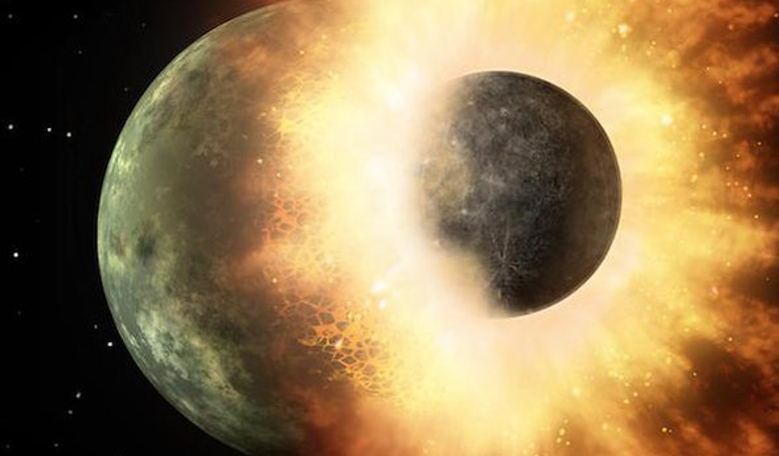The Moon is an endless fascination for us humans, perhaps because it is the only one we’ve got, but now we might be one step closer to knowing its true lineage as new research points to the Moon being more like Earth than previously thought; so much so that it is in fact, compositionally, a mini version of our own planet.
It is generally accepted that the Moon came into being after a young Earth was struck by a mar-sized object billions of years ago. The material that was flung from the collision combined and settled into a disk around Earth, where it eventually coalesced to form the Moon. At least that’s how the theory goes.
If this was the case, then the Moon should be formed of material from both Earth and the impactor that struck it. However new research from planetary scientist Kevin Righter of the Astromaterials Research and Exploration Science Division (ARES) at NASA’s Johnson Space Center in Houston, Texas, questions that assumption.
Using a “bulk Moon” model composition similar to that of the Earth and factoring in elements such as post-impact disk processes, and the formation of the Moon’s small metallic core, Righter found that of the 14 volatile siderophile (metal-loving) elements found in Moon samples collected from the Apollo missions, nine had concentrations that were in agreement with his calculated values.
To compare, he then used a bulk Moon made of Mars-sized impactor compositions, but this did not correlate well with his calculated values, suggesting that the Moon is not made of material from the Mars-sized impacting body. Righter also complemented his models with experiments conducted at the petrology lab at Johnson, where the high pressure and temperature conditions of Moon’s interior can be simulated.
“Researchers have analyzed small subsets of these elements in the past, but this is the first time that all 14 elements were modeled together to analyze the Earth-Moon system,” Righter said. “By simulating the main processes contributing to the Moon’s formation and early differentiation, we were able to predict the level of each element that should be present in the Moon’s mantle.”
Of the five elements that had significantly lower concentrations than the model predictions, zinc, tin, cadmium, indium, and thulium – the most volatile of the lot – Righter proposes that these may be in such low concentrations in the lunar mantle because they never re-condensed after the giant impact.
Instead says Righter, they stayed in a gas phase never to recombine with the material that ultimately formed the Moon. “The possibility that most of these highly volatile elements stayed in the gas phase and did not condense into the Moon provides a plausible explanation for this difference between the Earth and Moon.” Although further modelling of the gas-melt separation mechanisms would be required in order to verify such a situation added Righter.
Other elements such as arsenic, silver, antimony, germanium and bismuth, are thought to have segregated into the core, which would explain why their concentrations are lower in the Moon’s mantle than expected.
“Scientists in the 1970s recognised the very low levels of some of these volatile elements in lunar samples,” Righter said. “Much lower than concentrations in the Earth. But lack of experimental data in the 1970s hindered scientists from a complete understanding of these low lunar concentrations.”
Despite the positive result, Righter cautioned that more is still needed to better understand the disk that was created after the impact, but he was hopeful that interest in the subject would be boosted following his research.











